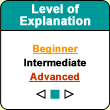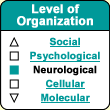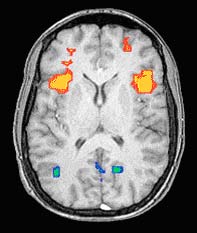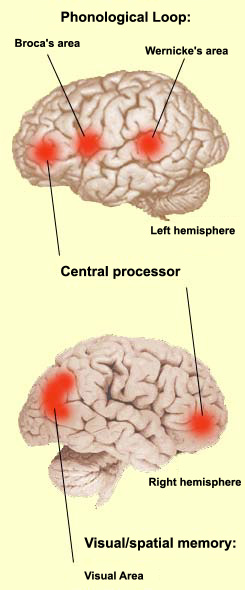|
| Suppose
you are in a museum admiring a painting. Your retinas capture
the image of this painting and route it, in the form of nerve
impulses, to the visual zone of your brain, which reconstructs
the overall image. These impulses are then routed to your
hippocampus, which acts as the gatekeeper and decides whether
or not to accept the information and pass it on to your long-term
memory. If your hippocampus does not let this information
in, you will probably forget the image of the painting within
a minute. But if your hippocampus does accept this information,
it will eventually be returned to the area it came from:
the visual cortex. There the image of the painting will be
placed in long-term memory, point by point, in the form of
thousands of strengthened connections between neurons. |
The hippocampus appears to play
a fundamental role in spatial memory in many animal species,
including humans. For example, in a British study, the
researchers asked taxi drivers to imagine their travels
through the city of London, while their brain activity
was monitored by positron emission tomography (PET scan).
This task, which was so familiar to these subjects, caused
a specific activation of their right hippocampus. In
human beings, the hippocampus may therefore contribute
to the construction of episodic memory by providing a
spatial framework for each memory that lets it be reconstituted
accurately. |
| |
The hippocampus,
the cortical structures surrounding it, and the neural
pathways that connect them to the cortex as a whole
are all heavily involved in declarative
memory–the memory of facts and events.
For example, after you’ve had a
fine dinner with some friends, your memories of their faces,
the taste of the wine, and the music that was playing are
distributed in the various visual, olfactory, and auditory
areas of the brain, but they are all connected together
by the hippocampus to form an "episode",
rather than remaining a collection of separate memories.
The hippocampus thus plays a
fundamental role in episodic
memory, the kind that will let you remember
this especially pleasant dinner party years later.
In fact, it seems to be the hippocampus that enables
you to “play the scene back”, by reactivating
this particular activity pattern in the various regions
of the cortex. This phenomenon would be very important
during dreams, and would explain the incorporation
of events from the last few days into them.
But after a while, these various
cortical regions activated during an event would become
so strongly linked with one another that they would no
longer need the hippocampus to act as their link. Thanks
to this linkage, the memory of a piece of music that
was playing that night could be enough to bring back
the entire scene of the dinner party. Each of these elements
could act as an index entry that lets you retrieve all
the others to your consciousness.
Thus, information that has been
encoded in long-term memory for a lengthy period of time
no longer requires the intervention of the hippocampus.
This is the case in particular for general knowledge
in semantic
memory, which instead activates the frontal and
temporal cortexes. The activity in the temporal lobe
would correspond to the activation of the fact in question,
while the activity in the frontal cortex would correspond
to its reaching consciousness.
Unlike our memory of facts and
events, however, our spatial memory appears to
be confined to the hippocampus. And more specifically
to the right hippocampus. This structure seems to be
able to create a mental map of space, thanks to certain
cells called place
cells. |
|
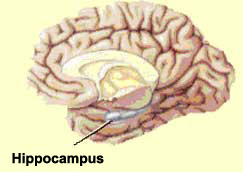
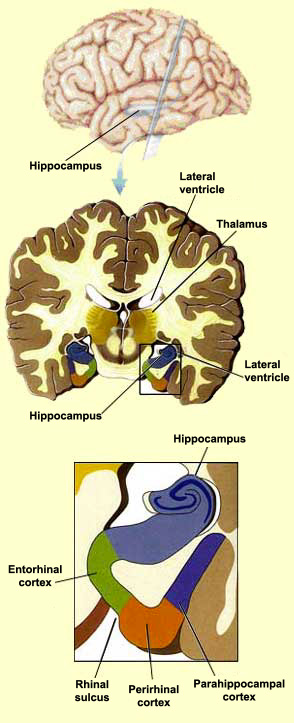
|
Some very intense personal memories that bring what is sometimes
called emotional memory into play appear to involve
another structure of the limbic system besides the hippocampus.
This structure is the amygdala,
which is already known to manage our reactions to fear. Many
other structures in the limbic system also help to encode
our long-term memories.
Lastly, procedural memory, such as knowing how to ride
a bike, does not appear to involve the hippocampus at all.
Instead, procedural memory appears to be associated with modifications
in the
cerebellum, the
basal ganglia, and the
motor cortex, all of which are involved in motor control.
As evidence to this effect, procedural memory is not affected
by amnesia caused by lesions to the hippocampus, but is affected
by damage to the cerebellum and by neurodegenerative diseases
that alter the basal ganglia, such as Huntington’s disease.
| |

